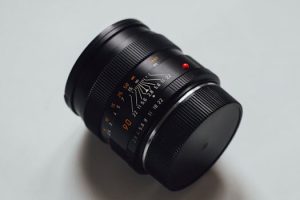Quantum Computing Transforms Fashion Design Methodologies
The fashion industry is constantly evolving and adapting to new technology. From virtual fashion shows to digital fabric printing, technology has had a major impact on how fashion is designed, produced, and marketed. However, one of the most revolutionary technological developments in recent years has been quantum computing, and it is poised to transform fashion design methodologies in ways we never thought possible.
What is Quantum Computing?
Quantum computing is a form of computing that harnesses the principles of quantum mechanics to process information. Unlike traditional computers, which use bits (zeros and ones) to store and process information, quantum computers use quantum bits, or qubits, which can exist in multiple states at once. This allows quantum computers to solve complex problems significantly faster than traditional computing methods, making them ideal for handling fashion design processes that require a vast amount of data and calculations.
The Potential of Quantum Computing in Fashion Design
Quantum computing has the potential to revolutionize the way fashion is designed and produced. By harnessing the power of quantum computing, fashion designers can explore new design possibilities, create complex patterns and designs, and predict trends with unprecedented accuracy.
Streamlined Design Process
One of the biggest advantages of quantum computing in fashion design is its ability to handle vast amounts of data and calculations in a fraction of the time it takes traditional computers. This means that fashion designers can analyze and process large amounts of data, such as customer preferences and market trends, much faster, allowing them to make informed design decisions and create designs that are more in tune with consumer demands.
Efficient Material Selection
Fashion is one of the most resource-intensive industries, with the production of fabrics, dyes, and other materials consuming significant amounts of energy and water. Quantum computing can be used to optimize the selection and use of materials by analyzing data such as material properties, production processes, and sustainability criteria. This can help fashion designers make more sustainable and environmentally-friendly choices, reducing the industry’s impact on the environment.
Creating Complex Designs
Another way quantum computing can transform fashion design is by enabling designers to create intricate and complex designs that would be impossible to achieve using traditional computing methods. With qubits, designers can explore multiple design options simultaneously, allowing them to create new and innovative designs that push the boundaries of creativity and imagination.
The Future of Fashion Design
The use of quantum computing in fashion design is still in its early stages, but the potential it holds is enormous. From streamlining the design process, to creating more sustainable and complex designs, quantum computing is set to transform the fashion industry and pave the way for futuristic and innovative fashion. As the technology continues to advance, we can expect to see more applications of quantum computing in fashion design and an even more seamless and personalized fashion experience for consumers.
In Conclusion
Quantum computing has the power to transform the way fashion is designed, produced, and consumed. From faster and more efficient design processes to sustainable material selection and complex design possibilities, the possibilities are endless. As we continue to embrace the power of technology in the fashion industry, quantum computing is set to take fashion design to new heights and revolutionize the way we think about fashion.










